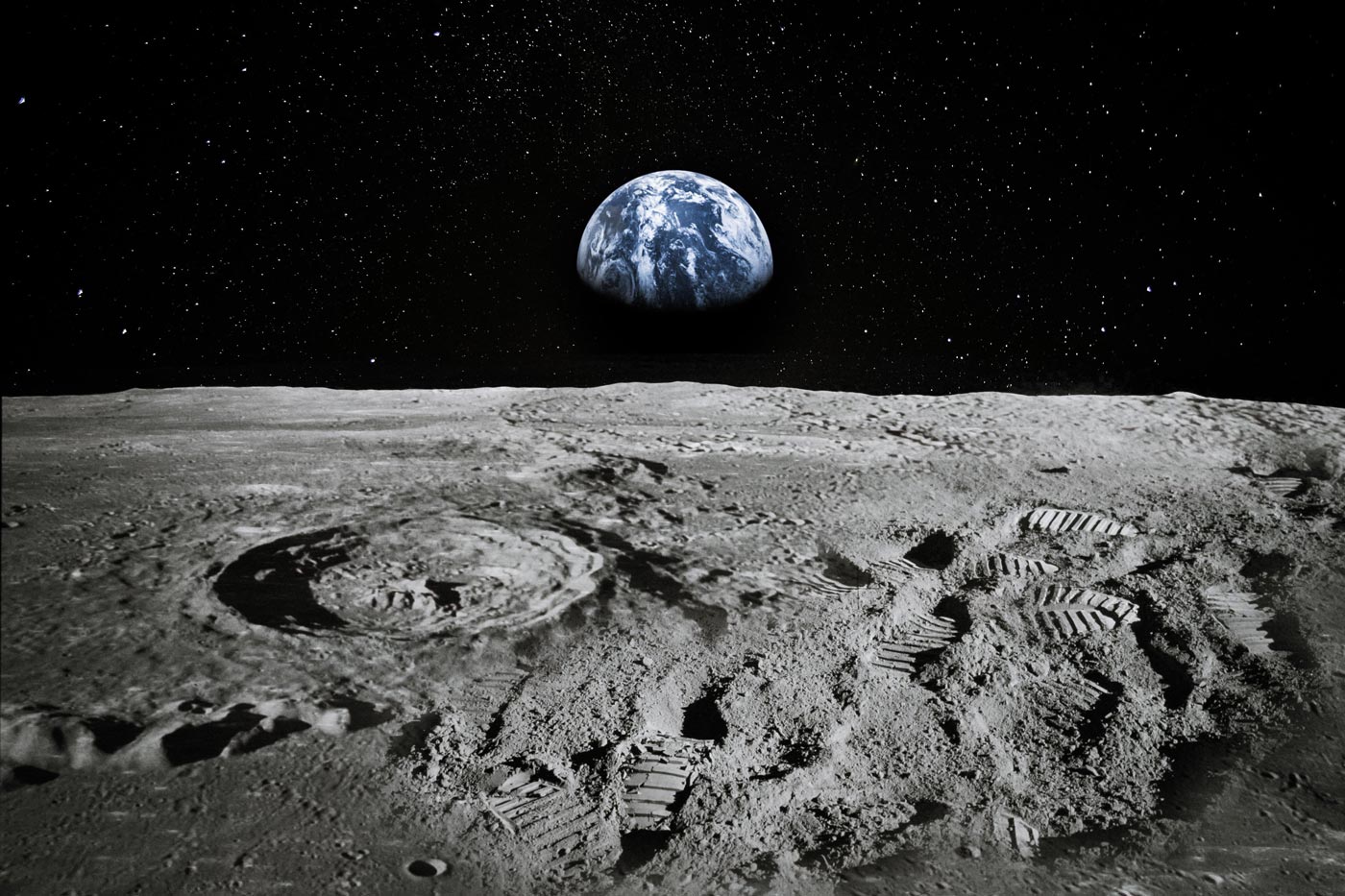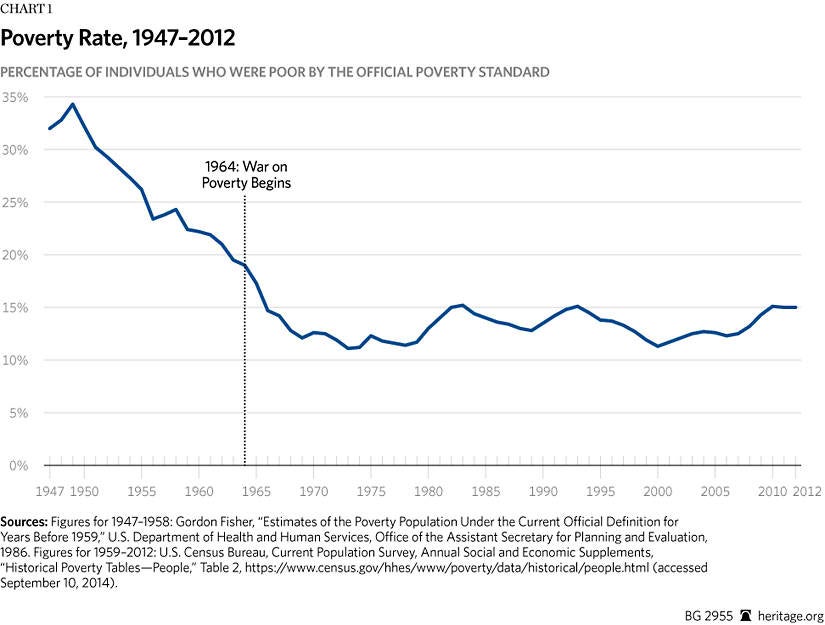October 4, 1955
The USSR successfully launches Sputnik 1, the first Earth-orbiting artificial satellite.

In 1955 a ballistic missile-based nuclear arms race stared between America and the USSR. Eventually, this morphed into a competition to achieve superior spaceflight capability. Many citizens of the U.S. didn’t see the point in this race and thought their money should be allocated to things a little closer to home.
On July 15, 1969, a day before the launch of Apollo 11, a group of civil rights activists gathered together to protest the moon landing. They argued that the money could be spent helping people in poverty by providing food and shelter. Because of this protest, NASA developed technologies to help people in need, but it didn’t amount to much. This protest did still raise awareness, which eventually led to more government spending on helping people in need, and the end of the Apollo missions.
After WW2, the threat of Germany was out of the way and the uneasy alliance of America, the USSR, and Britain fell apart. The conflicting views between the USSR and America started a period of tension known as the Cold War.
The Space Race started with the USSR responding to America's intent to build an artificial satellite, and develop space technologies that would be beneficial to them in the Cold War. Below is a timeline of the events leading to Apollo 11 on July 16, 1969.
The USSR successfully launches Sputnik 1, the first Earth-orbiting artificial satellite.
The USSR successfully launches Sputnik 2, carrying a dog named Laika. Being the first nation to launch a creature into space.
The US launches Explorer 2, which carried equipment that led to the discovery of the Van Allen radiation belt.
The National Aeronautics and Space Administration (NASA) is created, replacing the National Advisory Committee on Aeronautics (NACA).
NASA launches SCORE, the first communication satellite, that played a pre recorded-message from the US president, Dwight D. Eisenhower.
The USSR launches Luna 1, the first "cosmic rocket", which accidentally escaped the Moon's orbit after gaining too much speed.
NASA launched Explorer 6, becoming the world's first weather satellite, obtaining the first pictures of the Earth from space.
The USSR launches Luna 2 and becomes the first nation to send a spacecraft to the surface of the moon.
The USSR launches Luna 3 and succeeds in getting a picture of the farside of the moon.
The USSR launches Sputnik 5, launching 2 dogs, and a variety of plants into space.
NASA launches Ham, a chimpanzee, becoming the first hominid to enter, and exit space safely.
The USSR launches Yuri Gagarin aboard the Vostok 1, becoming the first man to go to space, and orbit a full rotation of Earth.
NASA launches Freedom 7, with Alan Shepard aboard. Traveling 116 miles high, this becomes the first pilot-controlled journey.
The USSR launches Vostok 6, carrying Valentina Tereshkova. This mission lasted 3 days, orbiting 48 times.
Alexei Leonov becomes the first man to leave his spacecraft, and perform a space walk, lasting 12 minutes.
NASA launches the first satellite to Mars, generating up close pictures of Mars' surface.
In January, American astronauts Gus Grissom, Ed White, and Roger Chaffee died while aboard Apollo 1 when a fire ignited in their capsule on the launch pad. Only months later the cosmonaut Vladimir Komarov's parachute fails to open when re-entering the Earth's atmosphere.
The US launches Apollo 8, which becomes the first man piloted flight to orbit the moon.

Image of man holding sign at the protest.
One day before the launch of Apollo 11, Ralph David Abernathy Sr, a Civil Rights Activist/Baptist minister, led 25 poor families to the Kennedy Space Center to protest the launch of Apollo 11. Calling out America’s distorted sense of priorities, the families brought wagons drawn by mules. The mules’ contrast to the Saturn V rocket represented the difference between the billions spent on the space program and the poor families who couldn’t afford bare necessities.

Graph showing the government spending on the Space Race.

This graph shows the poverty levels in America.
Song written by Gil Scott-Heron in 1970 about the governments only concern was the Space Race.
The Government thought that the money was well spent, developing important technologies, and showing the Soviet Union they wouldn't back down from a challenge. If we don't develop missiles and satellites, the Soviet Union could attack us and we wouldn't be prepared.

This image shows Thomas Paine wearing a mini "hangman's noose" given to him by Reverend Ralph Abernathy that read, "I Helped Hang Poverty"
To combat the peaceful protesters, NASA sent out an administrator named Thomas Paine. Abernathy talked to Paine about why the moon landing was negatively affecting the country. He told Paine that he had three requests from NASA: that ten families from his group could view the launch, NASA should support the movement to combat this nation's poverty, hunger, and other social problems, and that NASA engineers develop technologies to help combat the problem of hunger in America.
Paine replied saying,

Despite the protest, NASA still continued with the moonshot. On July 16, 1969, NASA launched the shuttle carrying Neil Armstrong, Buzz Aldrin, and Michael Collins. Eight days later on July 24, they landed on the moon, which most historians agree ended the Space Race.

Audio clip of Neil Armstong as he stepped onto the moon.
NASA did some work to develop technology that would benefit the poor. They took sensors originally used to detect contaminants in space, and modified them to analyze urban air pollution. They also used the insulation from space crafts to build walls that retained more heat. These efforts didn't accomplish much and were soon abandoned until the 1980’s.
After three moon landings, NASA suggested building a moon base, but Nixon declined. There was no need to develop more space technologies, seeing that the Cold War was over. The last trip to the moon left on December 7, 1972.
At the height of the Space Race, there were millions of Americans who didn’t have access to basic needs like water and adequate shelter, and not a lot was done about it. This problem remains relevant today. The wealthy build rockets for themselves, while their employees work for minimum pay in poor conditions because they have nowhere else ot go. We need to find a way to continue to advance technology while using our resources to make sure that everyone has an equal opportunity and can live safely. If we don’t do this, we fail to be what America stands for.